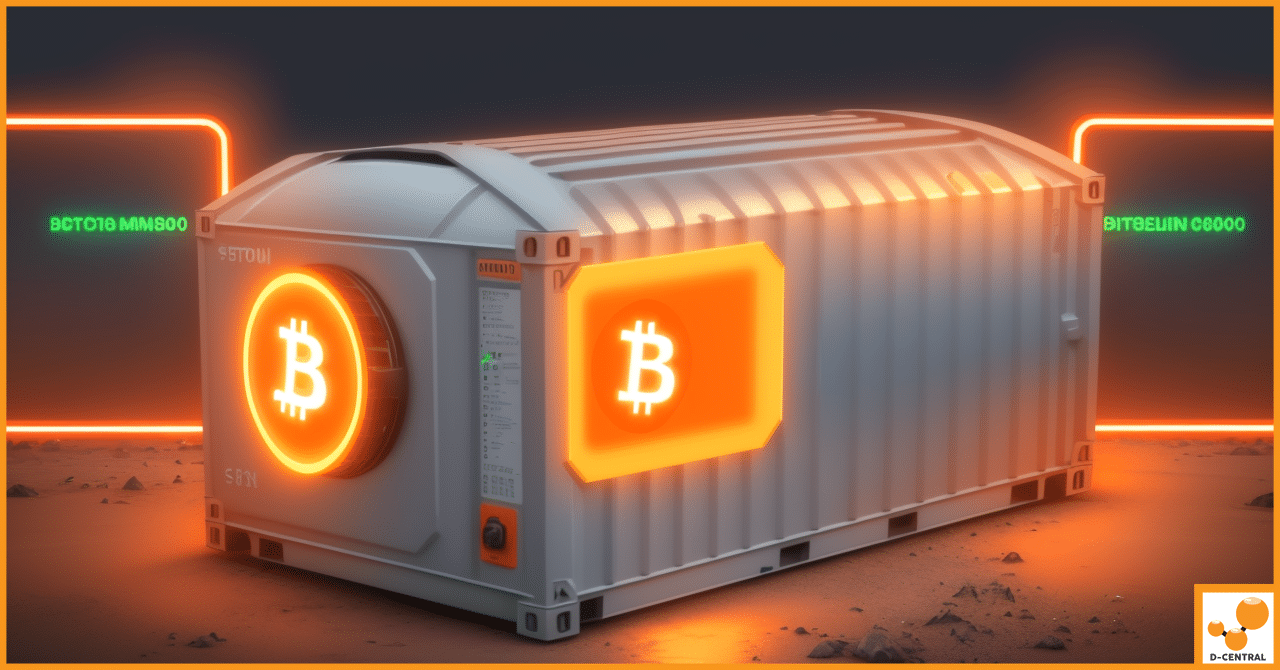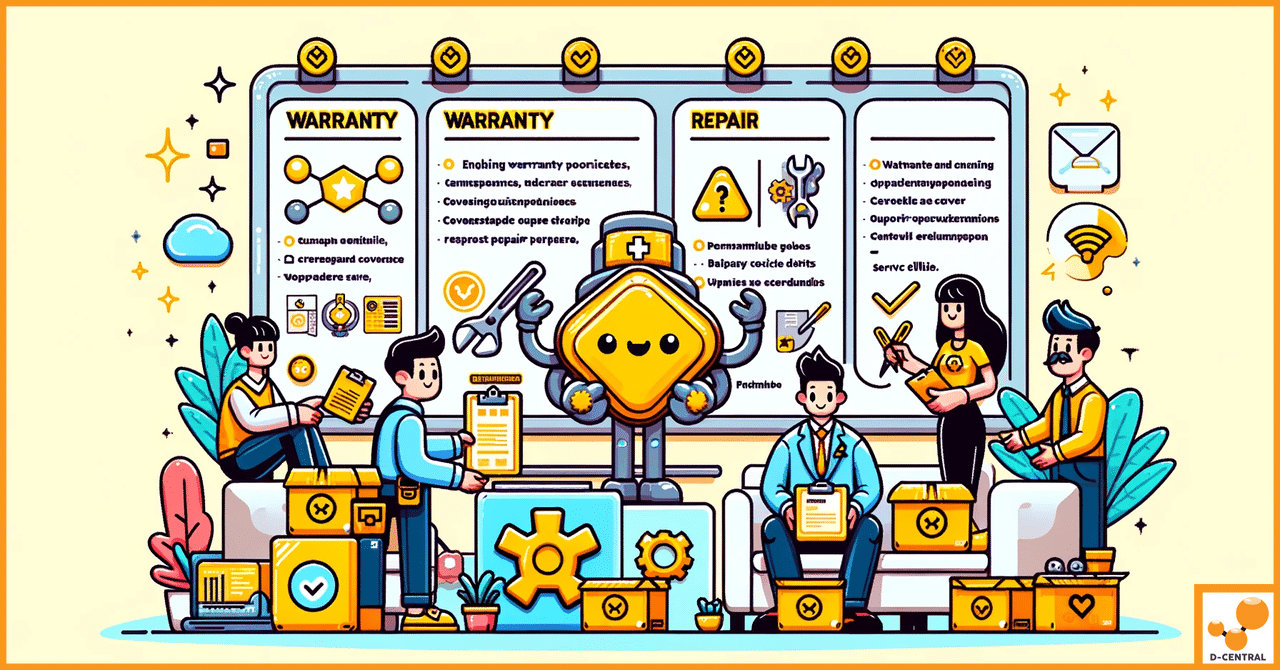
Efficient and Quiet Home Miners: The Ultimate Guide to Residential Cryptocurrency Mining
Are you considering venturing into the world of cryptocurrency mining from the comfort of your home? D-Central has tailored solutions
4479 Desserte Nord Autoroute 440, Laval, QC H7P 6E2

Bitcoin mining, the process of validating transactions and securing the Bitcoin network, has undergone a remarkable evolution since the cryptocurrency’s inception in 2009. Initially, mining was a simple task that could be performed on personal computers. However, as Bitcoin gained popularity and the difficulty of mining increased, the need for more powerful and specialized equipment became evident. This led to the emergence of Application-Specific Integrated Circuits (ASICs), designed solely for the purpose of mining Bitcoin. These ASICs represented a significant leap in both the efficiency and the computational power of mining operations.
As the industry matured, the scale of mining expanded, evolving from individual hobbyists to large-scale operations. This shift was driven by the relentless pursuit of efficiency and cost-effectiveness, as the profitability of Bitcoin mining is heavily influenced by factors like electricity costs, hardware efficiency, and operational expenses. The landscape of Bitcoin mining today is a complex and dynamic field, characterized by rapid technological advancements and a continuous search for innovative solutions to optimize mining operations.
One such innovative solution that has gained traction in the Bitcoin mining industry is the use of Bitcoin mining containers. These are essentially mobile, modular data centers specifically designed to house and power Bitcoin mining equipment. Mining containers offer a versatile and efficient approach to setting up mining operations, especially in locations where traditional data center infrastructure might be impractical or too costly to develop.
Mining containers are equipped with all the necessary components for mining operations, including power supply units, cooling systems, and security measures. They are designed to be easily transportable, allowing miners to relocate their operations to areas with more favorable conditions, such as lower energy costs or cooler climates. This mobility not only provides operational flexibility but also opens up possibilities for utilizing renewable or stranded energy sources, aligning with the growing emphasis on sustainability in the crypto mining industry.
In this comprehensive guide, we will delve into the advantages and challenges of using Bitcoin mining containers in the cryptocurrency mining industry. Drawing from D-Central Technologies’ extensive experience and expertise, having consulted with over 40 different manufacturers and suppliers, we possess a unique insight into the world of Bitcoin mining containers. Our hands-on experience with our own mining containers in operation in Alberta, in partnership with a local Canadian company, positions us perfectly to explore this subject in depth. We aim to provide a balanced perspective, helping both newcomers and seasoned miners understand the potential benefits and considerations involved in adopting containerized mining solutions.
Bitcoin mining containers are specialized, portable units designed to house and power Bitcoin mining hardware. Essentially, they are self-contained data centers, often repurposed from shipping containers, equipped with all the necessary infrastructure to support large-scale cryptocurrency mining operations. These containers are engineered to optimize the performance of mining equipment, providing solutions for power distribution, cooling, and security.
The primary function of a Bitcoin mining container is to offer a flexible, efficient, and scalable environment for Bitcoin mining. They are designed to be easily transportable, allowing miners to relocate their operations to areas with the most favorable conditions, such as lower electricity costs or cooler climates. This mobility is crucial in maximizing the profitability and sustainability of mining operations, especially in a field where operational margins can be significantly impacted by external factors like energy prices and regulatory changes.
The concept of Bitcoin mining containers emerged as a response to the evolving needs of the Bitcoin mining industry. In the early days of Bitcoin, mining was a relatively simple operation that could be done using a standard computer. However, as the network grew and the mining difficulty increased, the need for more efficient and powerful hardware became apparent. This led to the development of specialized mining rigs and ASICs, which required more space, power, and cooling than what a typical home or office could provide.
As mining operations scaled up, the industry saw a shift from individual, small-scale miners to large, industrial mining farms. These farms required significant infrastructure investments, including large buildings, cooling systems, and extensive electrical setups. The fixed nature of these facilities posed challenges in terms of flexibility and responsiveness to changing mining conditions, such as fluctuating energy prices or regulatory environments.
Bitcoin mining containers were developed as a solution to these challenges, offering a way to create scalable, efficient, and mobile mining operations. They allowed miners to set up shop in locations with the most advantageous conditions and to quickly relocate if those conditions changed.
There are several types of Bitcoin mining containers available in the market, each designed to cater to different needs and preferences.
Each type of container has its own set of advantages and is suited for different operational scales and environments. The choice depends on various factors, including budget, location, energy availability, and environmental considerations.
One of the most significant advantages of Bitcoin mining containers is their mobility and flexibility. These containers can be easily transported and set up in different locations, allowing miners to capitalize on regions with lower energy costs and more favorable regulatory environments. This mobility is particularly beneficial in the dynamic landscape of cryptocurrency mining, where changes in local regulations or energy prices can significantly impact profitability. By being able to move their operations, miners can quickly adapt to these changes, ensuring continuous and efficient mining activities.
Bitcoin mining containers also offer considerable cost savings, both in terms of setup and operational expenses. Traditional mining setups require significant capital investment in building and maintaining large-scale data centers. In contrast, mining containers are a more economical alternative, as they repurpose existing structures (like shipping containers) and minimize the need for constructing new facilities. Additionally, the operational costs are lower due to the ability to relocate to areas with cheaper electricity and the reduced need for extensive cooling infrastructure, thanks to the container’s design.
Scalability is another key advantage of containerized mining operations. As the demand for Bitcoin mining grows, the need for scalable solutions becomes crucial. Mining containers are inherently modular, allowing miners to start with a single container and expand by adding more as their operations grow. This modularity provides a flexible approach to scaling, enabling miners to increase their mining power without the need for large upfront investments in fixed infrastructure.
Innovations in container design have significantly improved energy efficiency in Bitcoin mining. Many modern containers are equipped with advanced cooling systems and are designed to optimize airflow, reducing the amount of energy required to keep the mining hardware at optimal temperatures. Furthermore, some containers are specifically designed to utilize stranded or flared gas – byproducts of oil extraction that would otherwise be wasted. By converting this gas into electricity for mining, these containers not only improve energy efficiency but also contribute to reducing environmental waste.
The ease and speed of deploying Bitcoin mining containers are unparalleled compared to traditional mining setups. These containers come pre-equipped with the necessary infrastructure for mining, allowing for a plug-and-play approach. This means that once a suitable location is found, a mining operation can be set up and operational in a fraction of the time it would take to construct a conventional data center. This rapid deployment capability is crucial for taking advantage of temporal opportunities in the mining sector, such as short-term dips in energy prices or temporary access to renewable energy sources.
While Bitcoin mining containers offer significant advantages in terms of mobility and scalability, they are not without their limitations, particularly regarding space. The physical constraints of a container can impact the number of mining rigs that can be housed within. This limitation can affect the overall mining capabilities and efficiency, as the space must be optimally utilized to maximize mining power while ensuring adequate airflow and cooling. For large-scale operations, this might necessitate the use of multiple containers, which can increase logistical complexity and operational costs.
Managing heat and noise is another significant challenge within Bitcoin mining containers. The high-density arrangement of mining hardware generates substantial heat, requiring robust cooling solutions to prevent overheating and potential hardware damage. Effective temperature control is crucial for maintaining optimal performance and extending the lifespan of the mining equipment. Additionally, the noise produced by high-powered fans and cooling systems can be considerable, posing challenges in residential areas or other noise-sensitive environments. Implementing effective noise reduction and cooling strategies is essential but can add to the complexity and cost of the container setup.
Regular maintenance is vital to ensure the smooth operation of containerized mining facilities. This includes routine checks and servicing of cooling systems, power supplies, and mining hardware. The compact nature of containers can make maintenance tasks more challenging, requiring specialized knowledge and tools. Security is another concern, as containers often house expensive mining equipment and are sometimes located in remote or less secure areas. Protecting these assets from theft or vandalism requires additional security measures, such as surveillance systems, robust locks, and, in some cases, on-site personnel, adding to the operational costs.
The environmental impact of Bitcoin mining, particularly in terms of energy consumption and carbon footprint, is a growing concern. While mining containers can be relocated to areas with access to renewable energy sources, the overall energy demand of large-scale mining operations remains high. The use of containers does offer some environmental benefits, such as the potential to utilize stranded or flared gas, thus reducing waste. However, the industry as a whole faces challenges in becoming more sustainable and environmentally friendly. Innovations in container design focusing on energy efficiency and the integration of renewable energy sources are crucial steps towards mitigating the environmental impact of Bitcoin mining.
Advancements in cooling technologies are pivotal in enhancing the efficiency and sustainability of Bitcoin mining containers. Traditional air cooling systems, while effective, often struggle to keep up with the intense heat generated by high-density ASIC miners. This challenge has led to the adoption of more advanced cooling solutions, such as immersion cooling. Immersion cooling involves submerging mining hardware in a non-conductive liquid, which absorbs heat more efficiently than air. This technology not only improves cooling efficiency but also reduces noise and can potentially extend the lifespan of the mining equipment. As the industry continues to evolve, we can expect further innovations in cooling technologies, focusing on energy efficiency and reducing the environmental impact of mining operations.
Integrating renewable energy sources with container mining is a growing trend, driven by the increasing focus on sustainability in the cryptocurrency sector. Solar, wind, and hydroelectric power offer promising alternatives to traditional, fossil-fuel-based energy sources. However, integrating these renewable sources presents challenges, including variability in power generation and the need for substantial initial investments. Despite these challenges, the potential benefits of a lower carbon footprint and reduced operational costs make renewable energy integration an attractive prospect for the future of containerized Bitcoin mining.
An innovative use of Bitcoin mining containers is in the field of methane mitigation. Methane, a potent greenhouse gas, is often released during oil and gas extraction processes. By deploying mining containers at these extraction sites, companies can use excess methane to power Bitcoin mining operations. This not only provides a use for otherwise wasted gas but also helps reduce methane emissions, a significant contributor to climate change. This approach exemplifies how Bitcoin mining can be part of environmental solutions, turning a waste product into a valuable resource while reducing greenhouse gas emissions.
Looking ahead, the future of containerized Bitcoin mining is likely to be shaped by several key trends and technological advancements. We can expect to see a greater emphasis on sustainability, with more mining operations powered by renewable energy sources. Technological innovations will likely focus on improving energy efficiency, reducing the environmental impact, and enhancing the scalability and mobility of mining containers. Additionally, as regulatory landscapes evolve, containerized mining operations may become increasingly favored for their ability to quickly adapt and relocate in response to changing regulations. The integration of smart technologies for monitoring and automation is also likely to play a significant role in the future, making mining operations more efficient and less labor-intensive. As the industry continues to mature, these innovations and trends will shape the next generation of Bitcoin mining, making it more sustainable, efficient, and adaptable.
Selecting the appropriate Bitcoin mining container is a critical decision that hinges on several key factors tailored to specific operational needs. Potential miners should consider:
Conducting a thorough cost-benefit analysis is crucial for potential miners to ensure a profitable operation. This analysis should include:
Understanding and complying with local regulations is paramount in the Bitcoin mining industry. Miners should:
By carefully considering these factors, potential miners can make an informed decision that balances their operational goals with financial viability and regulatory compliance.
In this comprehensive exploration of Bitcoin mining containers, we have delved into various facets of this innovative approach to cryptocurrency mining. From the definition and historical context to the advantages, challenges, and future prospects, Bitcoin mining containers have emerged as a pivotal element in the evolving landscape of cryptocurrency mining.
Bitcoin mining containers represent a significant innovation in the cryptocurrency mining industry. Their ability to adapt to changing environments, scale efficiently, and potentially reduce environmental impact positions them as a key component in the future of Bitcoin mining. As the industry continues to grow and evolve, the role of these containers is likely to become increasingly prominent.
For those interested in exploring the world of Bitcoin mining further, especially the potential of containerized solutions, a wealth of resources is available. From detailed industry reports to real-world case studies, these resources can provide deeper insights and practical guidance.
For expert consultations and more specific inquiries, reaching out to professionals in the field, such as D-Central Technologies, can provide tailored advice and solutions. Their experience and expertise in Bitcoin mining containers make them a valuable resource for anyone looking to venture into this dynamic and exciting domain.
What are Bitcoin mining containers?
Bitcoin mining containers are portable, modular data centers designed to house and power Bitcoin mining equipment. They are often made from repurposed shipping containers and equipped with power supply units, cooling systems, and security measures.
Why have Bitcoin mining containers gained popularity?
Bitcoin mining containers offer mobility, allowing for relocation to areas with favorable conditions like lower energy costs or cooler climates. They also provide operational flexibility, cost-effectiveness, scalability, and the ability to rapidly deploy mining operations.
What types of Bitcoin mining containers are available?
There are various types such as standard shipping container conversions, custom-built containers, immersion cooling containers, modular containers, and eco-friendly containers designed for mining with renewable energy sources.
What are the advantages of using Bitcoin mining containers?
Advantages include their mobility, cost-effectiveness, scalability, energy efficiency, and the capacity for rapid deployment as opposed to constructing traditional data center infrastructure.
What challenges do Bitcoin mining containers face?
Challenges include space limitations, temperature and noise control, maintenance and security concerns, and environmental impacts, especially related to energy consumption and carbon footprint.
How are technological innovations improving Bitcoin mining containers?
Innovations include advancements in cooling technologies like immersion cooling, integration of renewable energy sources, and methane mitigation strategies that utilize excess gas from oil extraction sites for power.
What should potential miners consider when choosing Bitcoin mining containers?
Consider factors such as size and capacity, cooling technology, energy source compatibility, mobility requirements, budget constraints, and scalability.
Why is a cost-benefit analysis important for Bitcoin mining?
It helps potential miners ensure profitability by assessing initial investments, operational costs, projected earnings, payback period, and risk related to market and energy price fluctuations.
What regulatory considerations are there for Bitcoin mining with containers?
Miners should be aware of local laws, environmental compliance, permit and licensing requirements, and prepare for potential regulatory changes that could affect their mining operations.
Where can one get expert consultations on Bitcoin mining containers?
For expert advice and tailored solutions, professionals in the field such as D-Central Technologies offer consultations and have extensive experience with Bitcoin mining containers.
DISCLAIMER: D-Central Technologies and its associated content, including this blog, do not serve as financial advisors or official investment advisors. The insights and opinions shared here or by any guests featured in our content are provided purely for informational and educational purposes. Such communications should not be interpreted as financial, investment, legal, tax, or any form of specific advice. We are committed to advancing the knowledge and understanding of Bitcoin and its potential impact on society. However, we urge our community to proceed with caution and informed judgment in all related endeavors.
Related Posts

Are you considering venturing into the world of cryptocurrency mining from the comfort of your home? D-Central has tailored solutions

In the dynamic world of cryptocurrency mining, Antminer users face the critical task of maintaining their mining hardware to ensure

Bitcoin, since its inception in 2009, has emerged as a frontrunner in the digital currency space, revolutionizing the way we